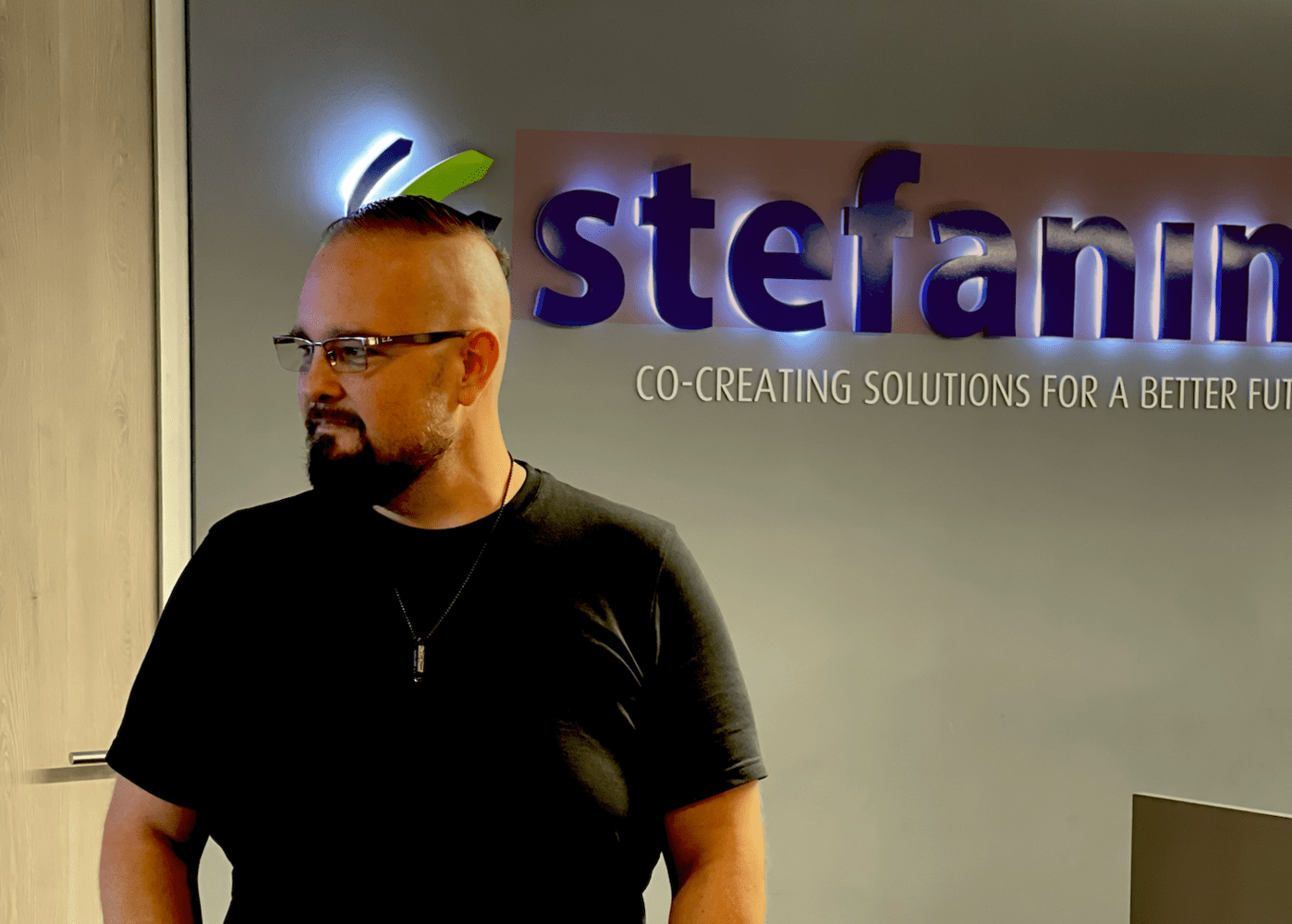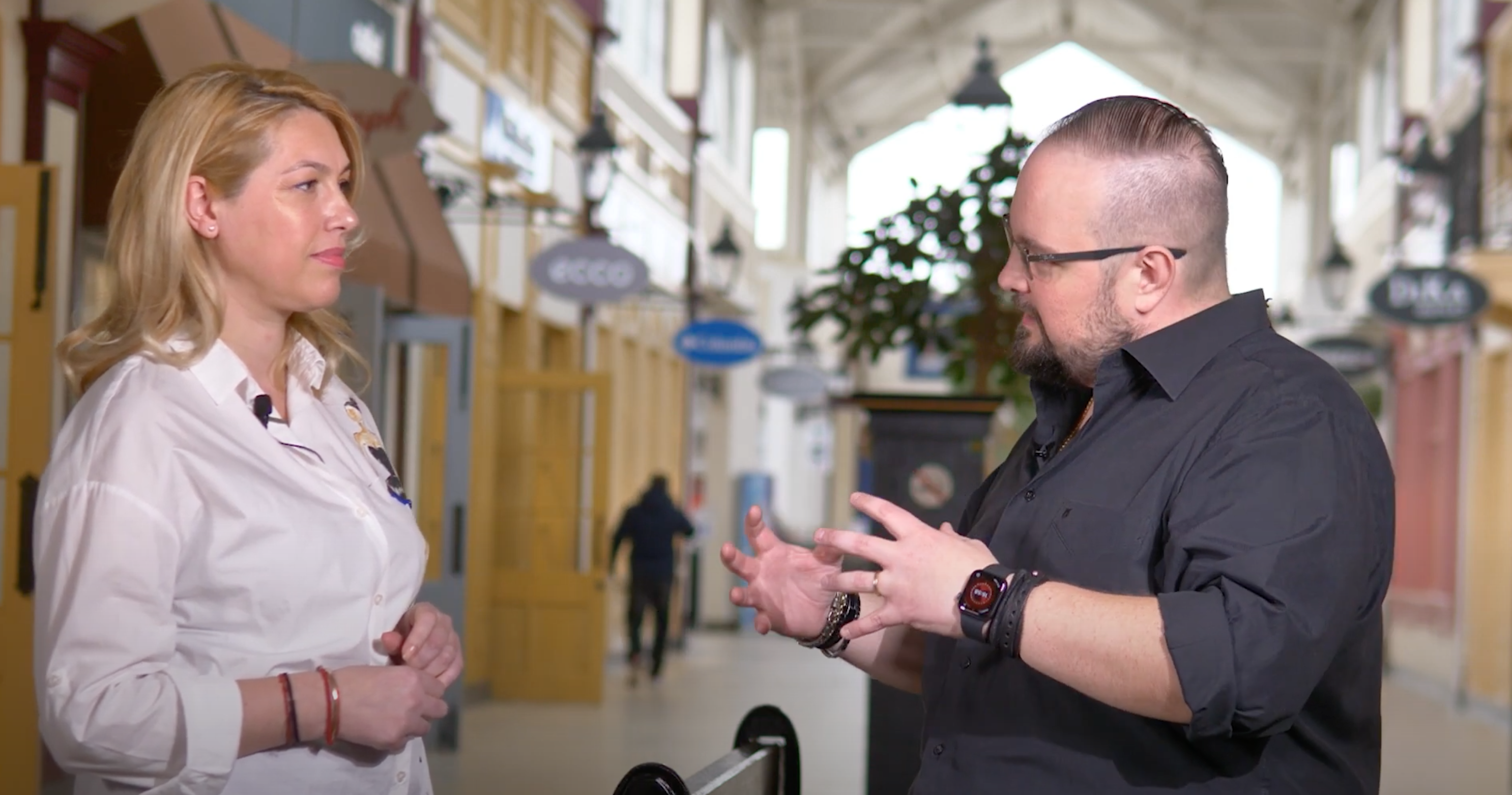“The new reality it’s that there will be a new reality every day from now on….” Progresiv Magazine June 2022 Interview with Alex Cernatescu - The current status of RETAIL BUSINESS from the DIGITAL, TECH & MARKETING PERSPECTIVE

“The new reality it’s that there will be a new reality every day from now on…."
Digital transformation and the rapid implementation of this type of programs have become factors that can define the success of a company. Alex Cernătescu, CEO, Co-Founder & Global Head of Strategy at Stefanini Infinit, speaks about how IT has changed from a support function to a locomotive one and what technologies have become underwear in the competitive landscape of retail market. By Bogdan Angheluță
“As a retailer the most important thing nowadays is the team you have” thinks the co-founder of Stefanini Infinit, part of Stefanini Group.
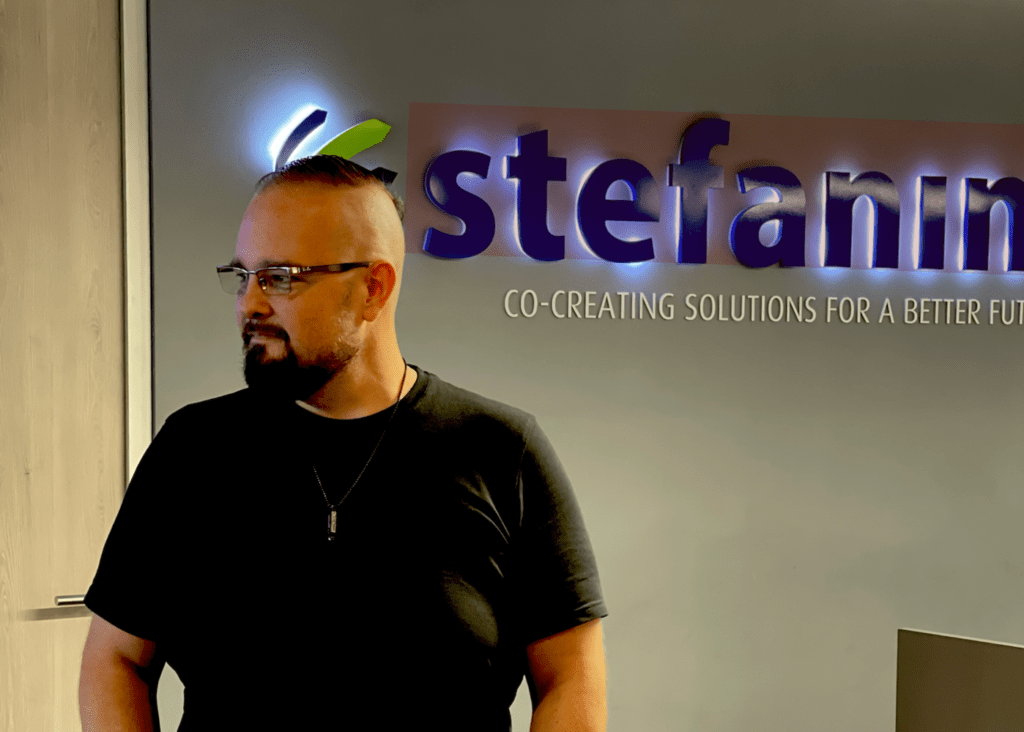
Any innovative initiative involves change management, and the biggest problem that big companies now have is managing this change management. Why? Because when you add on the table a project that also has an area of digital, technology, marketing and commercial, you must have people that communicate, but they, until 2, 5 or 7 years ago had different objectives. Now there are some very interesting changes, in which IT becomes an income generation line. If the IT department implements some solutions, they start to bring more money, to optimize the return on investment, to provide clarity, to provide business intelligence. Suddenly, instead of being a support function, IT becomes a “locomotive” function, along with marketing and sales. Therefore, the biggest challenge for retailers is to ensure that they have both the right team in the right place and the organization’s openness to such projects. Basically, they need to make sure that their organizations are “innovation ready”. Here is the challenge. They must then be able to outline a very clear strategy. I have noticed that many large companies operate based on vision, but the strategy is missing and then there are big shortcomings. It is very important for a large company to know where it has blockages and why it cannot move very quickly.”
Defining the customer journey, essential in the retailer-consumer relationship
“Before the reality we are in, we used to define a brand as the sum of the creative elements that the company pushed into the market. Now, a brand is the sum of the interactions with the consumer, which are 90% digital “, considers Alex Cernătescu.
“When you’re in the supermarket and reaching out to choose your beer or what you want to buy, a lot of other things have happened to you, interactions up to that moment that make you decide.” The customer journey, to be complete and functioning, requires retailers to have platforms through which to measure it, to understand it and then to be able to act on it. This is the biggest stake now, especially in the retail area, he believes. “There is another important aspect: when the consumer enters the store, he has his smartphone on him. And the question is this: how do companies, brands that sell in retail, but also the retailer itself, manage to increase the physical experience of the consumer using the device that he has in his pocket? This is another important part that is appearing in more and more strategies. It is not something I have encountered only in Romania, but also in North America, Latin America, and other European countries. This is where we are moving, to treat the retail experience as a platform that, starting from the principle that it has the role of bringing value to the consumer, allows at the same time the brands to make the investment more efficient.” Moving on to the types of technology needed, the one that can’t be missed is artificial intelligence. Specifically, there are certain areas where data sets can be analyzed very quickly, then generating insights in a short time.
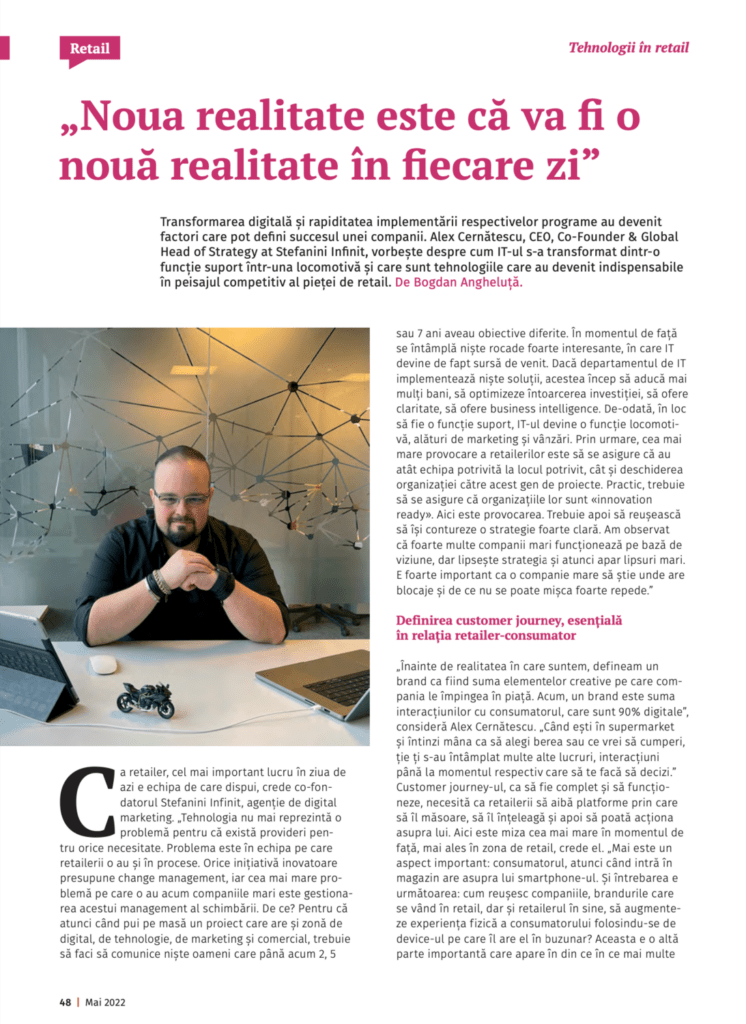
“Basically, artificial intelligence intervenes quite a bit because it can recognize types of behavior. And when you recognize such a guy, you can realize some things, from the ordinary optimization of the shopping cart – such as the classic “if he gets his hands on beer, I’ll give him chips” – to more advanced things. If he took three types of spices, I could estimate what kind of recipe he has in mind, and from there I can make some suggestions regarding certain types of products. As I suggest, he interacts and again I can come and give him exactly what he needs, offering him an extraordinary experience, but also managing to optimize the business itself “, he explains. Then there is the area of predictive analytics, where you can consider different data sets from multiple sources to understand what impact they have on consumer behavior, both offline and online.
Although at first glance these two channels seem similar, they are totally different, explains Cernătescu.
Everything is part of creating a smart ecosystem, with both the digital and the traditional area.
Information, valuable when used properly
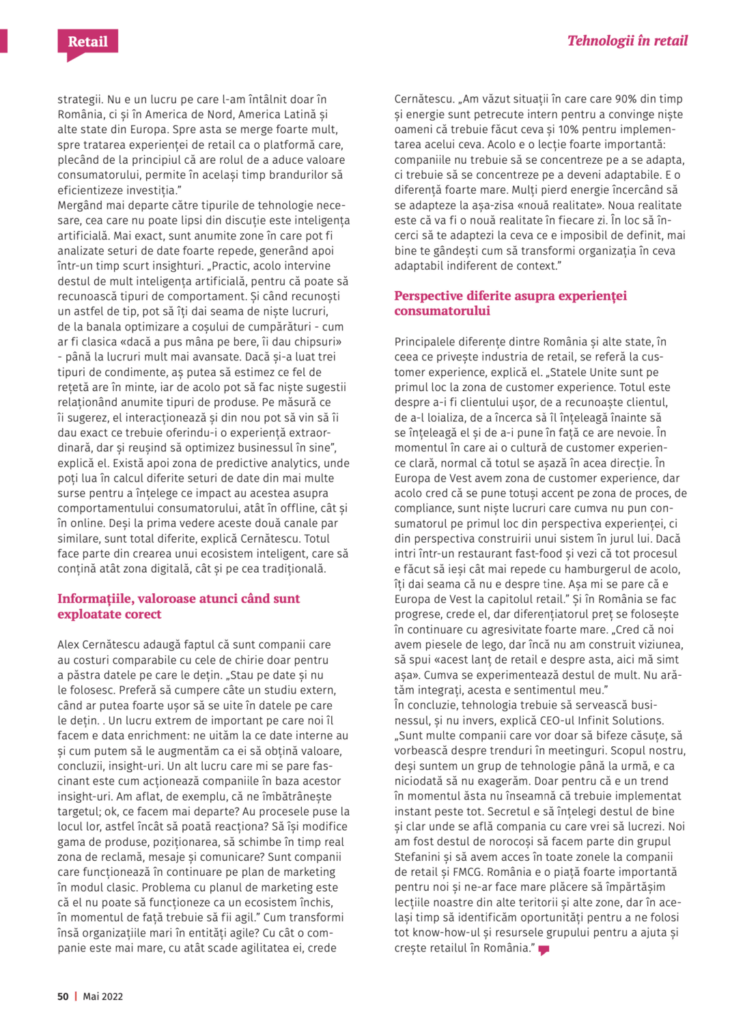
Alex Cernătescu adds that there are companies that have costs comparable to those of rent just to keep the data they have.
“They sit on the data, and they do not use it. They prefer to buy an external study or research, when they could very easily look at the data they have. An extremely important thing we do is data enrichment: we look at what internal data they have and how we can augment it so that they get value, conclusions, insights. Another thing that strikes me as fascinating is how companies act on these insights. We found out, for example, that our target is aging; ok what do we do next? Do they have the processes in place so that they can react? To change its product range, positioning, to change in real time the area of advertising, messages, and communication.
There are companies that still operate marketing in the classic way. The problem with the marketing plan is that it can’t function as a closed ecosystem, you have to be agile right now.”
But how do you turn large organizations into agile ones? The bigger is a company, the lower is its agility, Cernătescu believes.
“We have seen situations where 90% of time and energy is spent internally to convince some people that something needs to be done and 10% to implement that thing. That’s a very important lesson: companies don’t have to focus on adapting, they must focus on becoming adaptable.
There is a big difference. Many are losing energy trying to adapt to the so-called “new reality.”
The new reality is that there will be a new one reality day.
Instead of trying to adapt to something that is impossible to define, you better think about how to turn your organization into something adaptable regardless of the context.”
Different perspectives on the consumer experience
The main differences between Romania and other countries, in terms of the retail industry, refer to the customer experience, he explains. “The United States ranks first in the customer experience area. It’s all about being easy for the customer, recognizing the customer, turning him to a loyal one, trying to understand them before they get along, and putting them in front of what they need. Once you have a clear customer experience culture, it’s normal for everything to go that way.
In Western Europe we have the area of customer experience, but there the focus is still on the process area, compliance, there are some things that somehow do not put the consumer in the first place from the perspective of experience, but from the perspective of building a system around it.
If you walk into a fast-food restaurant and see that the whole process is done for you to get out with the hamburger as quickly as possible, you realize it’s not about you.
That’s how I think Western Europe is in terms of retail.”
Progress is being made in Romania as well, he believes, but the price differentiator is still used very aggressively.
“I think we have the Lego pieces, but we haven’t built the vision yet, to say ‘this retail chain is about that, that’s how I feel here’.
Somehow, they’re experimenting quite a bit. We don’t look integrated, that’s my feeling.”
In conclusion, technology must serve the business, not the other way around, explains the CEO of Stefanini Infinit.
“There are many companies that just want to check the boxes, to talk about trends in meetings.
Our goal, even though we are a technology group after all, is to never overdo it.
Just because it’s a trend right now doesn’t mean it has to be implemented everywhere.
The secret is to understand quite well and clearly where the company you want to work with is.
We were lucky enough to be part of the Stefanini Group and have access to retail and FMCG companies in all areas of the world.
Romania is a very important market for us, and we would be very pleased to share our lessons from other territories and other areas, but at the same time to identify opportunities to use all the know-how and resources of the group to help and grow. retail in Romania.”

